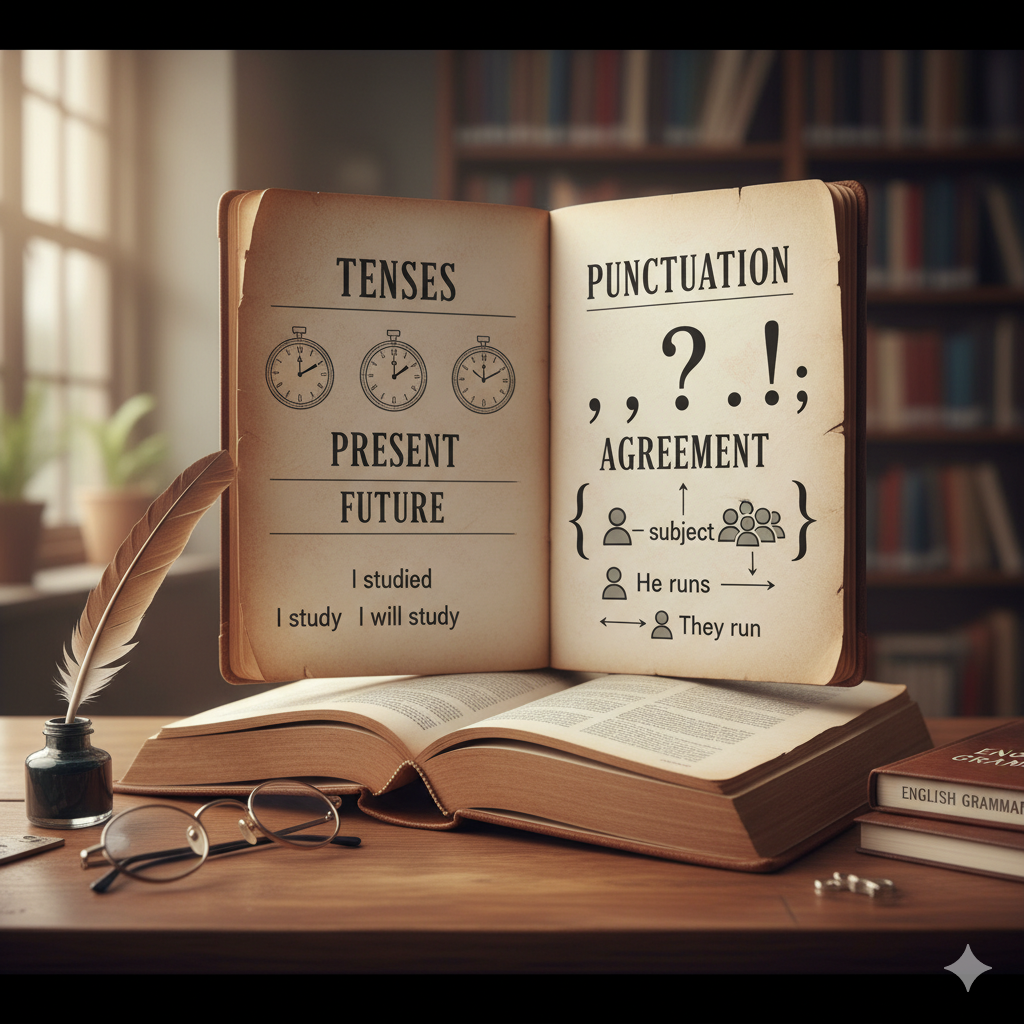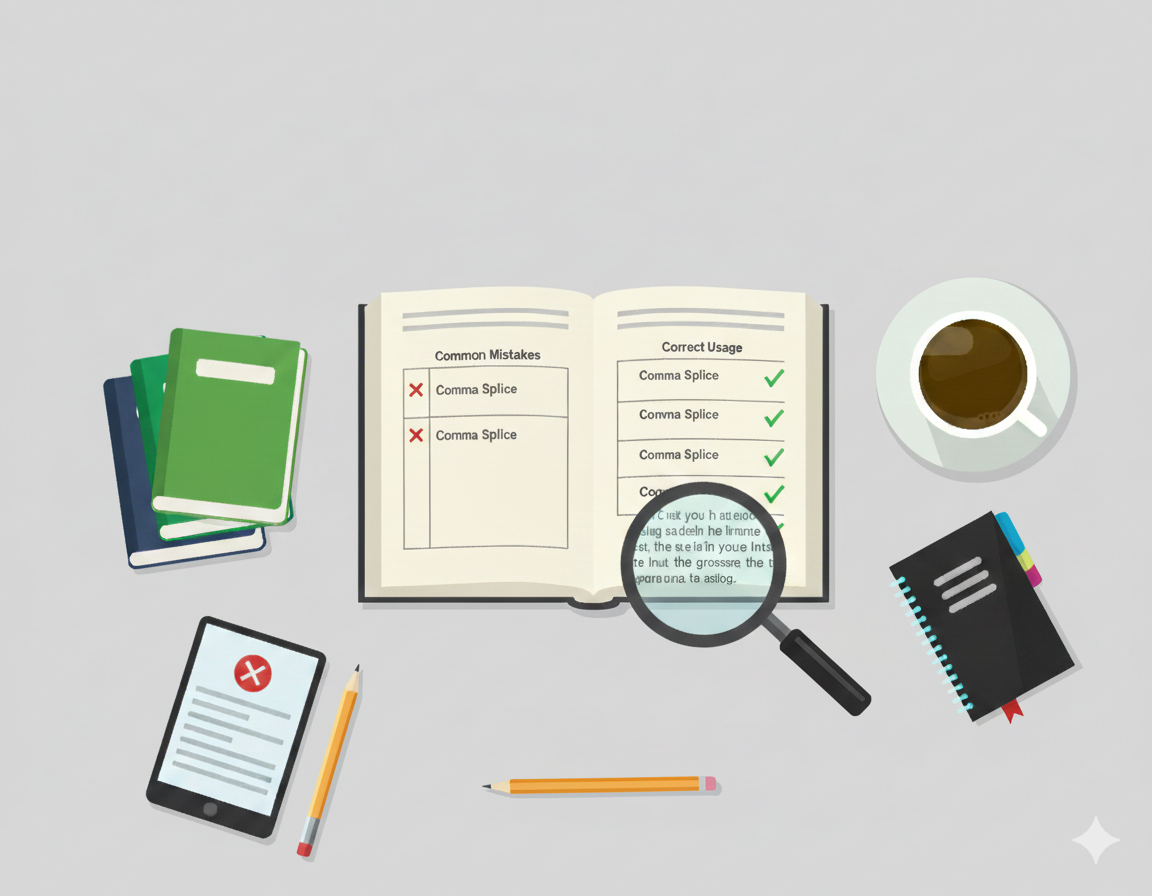
English Grammar Rules Every Student Should Know — Tenses, Punctuation & Agreement
English Grammar Rules Every Student Should Know
An evergreen guide covering verb tenses, punctuation essentials, and subject–verb agreement — with examples and quick tips you can apply today.
Why grammar still matters
Good grammar helps you communicate clearly and professionally. Whether you’re writing an essay, an email, or a lab report, mastering a few core rules makes your meaning unmistakable and your writing more credible.
1. Verb tenses — choosing the right time frame
Tenses indicate when an action happens. Here are the tenses students use most often and how to use them correctly.
| Tense | Use | Example |
|---|---|---|
| Present Simple | Facts, routines | She writes every morning. |
| Present Continuous | Actions happening now | She is writing right now. |
| Past Simple | Completed actions in the past | She wrote her essay yesterday. |
| Present Perfect | Past actions with present relevance | She has finished her draft. |
| Future (will / going to) | Predictions or planned actions | She will submit the paper tomorrow. |
Tip: Use present perfect (has/have + past participle) when the exact time isn’t stated but the result matters now: “I have read that article” (implies readiness for discussion).
2. Subject–verb agreement — match number and person
Subjects and verbs must agree in number (singular/plural) and person. This rule seems basic but trips up many writers.
Watch out for tricky subjects:
- Collective nouns: team, committee — usually singular: The team is winning.
- Subjects joined by “and”: plural: Tom and Maria are here.
- Subjects joined by “or/nor”: agree with the closer subject: Neither the teacher nor the students were late.
- Indefinite pronouns: everyone, someone — singular: Everyone is ready.
3. Punctuation essentials — clarity and rhythm
Punctuation controls meaning. A misplaced comma or missing colon can change your sentence or confuse readers. Focus on these essentials:
Commas (,)
- Use after introductory phrases: After lunch, we resumed work.
- Use to separate items in a list: Apples, oranges, and pears.
- Use before coordinating conjunctions joining independent clauses: She studies hard, and she sleeps well.
Semicolons and colons (; :)
- Semicolon links related independent clauses: He revised his draft; it was much better.
- Colon introduces a list or explanation: She needed three things: focus, time, and coffee.
Apostrophes (’)
- Show possession: the student's paper (singular), the students' papers (plural)
- Don’t use for plurals: apples not apple's
Quotation marks and punctuation
In American English, periods and commas typically go inside quotation marks: “The results were clear,” she said. For block quotations or technical writing check your style guide (APA, MLA, Chicago).
4. Common error patterns and how to fix them
- Run-on sentences: Join two independent clauses with a comma only — bad. Fix with a period, semicolon, or coordinating conjunction. Bad: I finished the draft, I submitted it. Good: I finished the draft, and I submitted it.
- Comma splices: Similar to run-ons — avoid using a comma alone to join sentences.
- Misplaced modifiers: Place descriptive phrases next to the word they modify. Bad: She nearly wrote 100 pages. (Did she almost write, or did she write almost 100?) Better: She wrote nearly 100 pages.
- Agreement errors with collective nouns and compound subjects: double-check subject–verb match as shown above.
5. Quick editing checklist
- Are verbs consistent in tense throughout each section?
- Do subjects and verbs agree in number and person?
- Have you used commas correctly after introductory elements?
- Are punctuation marks placed inside/outside quotes per your style?
- Have you broken long run-ons into clearer sentences?



